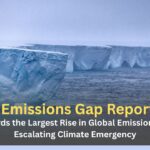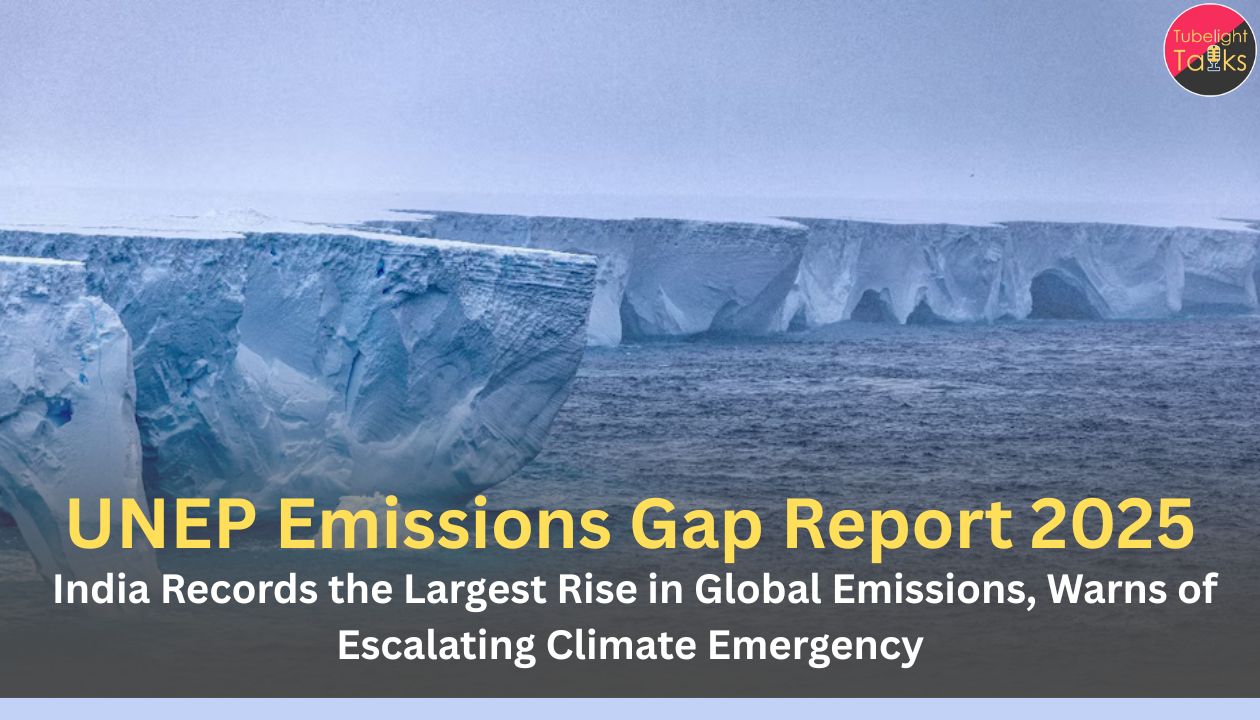Global growth outlook 2025 appears more resilient than many feared, even as the world remains trapped between rising trade tensions and shifting geopolitical alignments. The International Monetary Fund (IMF), in its latest October 2025 World Economic Outlook, has revised global growth projections slightly upward for the coming year—from 2.9% to 3.2%—citing strong services demand, easing inflation, and a gradual stabilization in several emerging markets.
Yet, this cautious optimism comes with a sharp edge: the looming threat of a renewed US-China trade war and the slow unraveling of globalized supply chains. These pressures are not just theoretical. They are already prompting policy shifts, driving nearshoring strategies, and testing the flexibility of both developing and developed economies.
Global Growth Recovery: What’s Fueling the Surge?

According to IMF Managing Director Kristalina Georgieva, the upward revision is driven by stronger-than-expected consumer demand, particularly in service-heavy economies like the United States, India, and parts of Southeast Asia.
Meanwhile, inflation in many G20 economies has cooled more rapidly than anticipated—allowing central banks to pause interest rate hikes and fueling cautious investor confidence.
Energy markets have also stabilized. The volatility caused by the Ukraine-Russia conflict in 2022–2024 has eased somewhat, and oil prices have remained within manageable levels, further supporting macroeconomic stability.
However, this recovery is far from evenly distributed. Sub-Saharan Africa, parts of Latin America, and conflict-ridden regions continue to struggle with debt loads, food insecurity, and declining FDI inflows.
The US-China Trade War: A Cold Economic Frontline
While the growth revision made headlines, the IMF’s deeper concern is clear: a growing disconnect between the world’s two largest economies. The ongoing trade conflict between the United States and China is no longer confined to tariffs—it now includes technology restrictions, investment barriers, and export controls.
Earlier this year, the US imposed a new round of semiconductor and AI export curbs targeting Chinese firms, while China retaliated by limiting access to rare earth minerals used in electronics and defense applications.
Also Read: U.S. and China rev up trade tensions
This tit-for-tat strategy has, according to the IMF, already shaved an estimated 0.3% off global GDP in 2024. If escalated further, the organization warns that the damage could exceed $1 trillion by 2027.
Georgieva noted in a press briefing,
“What we are seeing is the weaponization of trade. Countries must weigh national security needs without undermining the foundations of global economic cooperation.”
Supply-Chain Realignment: From Globalization to Regionalization
In response to rising protectionism, multinational companies are pivoting. The pandemic had already exposed the fragility of over-concentrated supply chains. Now, geopolitical tensions are accelerating the trend toward diversification.
The IMF report specifically highlighted these patterns:
- Nearshoring and “Friend-shoring”: US and European companies are shifting supply chains to politically aligned nations like Mexico, Vietnam, and India.
- Reshoring in Key Industries: Nations are investing in domestic manufacturing of semiconductors, green energy, and pharmaceuticals.
- Digital Infrastructure Overhaul: Cybersecurity and cloud infrastructure are being regionalized to avoid surveillance and cross-border access risks.
These trends may raise costs in the short term but are seen as necessary buffers against future shocks.
Winners and Losers in the New Economic Geography
The rise of economic blocs has both winners and losers. India, for instance, has emerged as a strategic beneficiary—bolstered by its diplomatic neutrality, low-cost workforce, and digital infrastructure investments.
Mexico is also experiencing a boom in foreign investment as North American firms seek tariff-safe options within USMCA agreements.
However, countries that once thrived as low-cost, high-output nodes in a hyper-globalized world—like Bangladesh and Indonesia—are now grappling with the realities of demand shifting elsewhere.
Emerging economies face a critical choice: adapt quickly to this new fragmented trade world, or risk becoming sidelined in the next wave of industrial policy.
Financial Stability and Debt Risk Remain Critical Concerns
Despite the positive growth outlook, the IMF warns of persistent vulnerabilities in global financial systems.
The Bank of England and the US Federal Reserve both flagged concerns around “hidden leverage” and corporate debt exposure, especially in sectors like real estate, tech, and consumer credit.
Moreover, sovereign debt levels in developing countries are reaching breaking points. More than 52 low-income nations now spend over 40% of their revenue servicing external debt. Without multilateral restructuring or relief mechanisms, IMF economists believe the risk of serial defaults remains high.
Climate Transition & Green Financing: The Missing Trillions
A significant portion of the IMF’s report is dedicated to the global failure to finance climate transitions. According to their estimates, at least $5 trillion in climate-aligned investments are needed annually between 2025 and 2035 to meet Paris Agreement goals. Yet, current financing falls short by over 60%.
Carbon pricing mechanisms remain uneven. Only 23% of global emissions are currently priced, and many emerging economies lack the policy frameworks to mobilize green capital effectively.
This gap, the IMF warns, could exacerbate inequality and destabilize regions already vulnerable to climate shocks like drought, food insecurity, and migration.
Digital Currencies & Financial Innovation: A New Frontier
The report also mentions the role of Central Bank Digital Currencies (CBDCs) in creating more resilient, secure, and inclusive financial systems. Over 110 countries are currently exploring CBDC frameworks, with pilot programs active in at least 20 major economies.
Digital financial infrastructure—particularly blockchain-backed platforms—could help reduce transaction costs, prevent fraud, and offer financial inclusion to the unbanked. However, risks around surveillance, data misuse, and regulatory gaps remain.
Geopolitical Fragmentation: The Bigger Threat?
Perhaps the most sobering message in the IMF report is about “geoeconomic fragmentation.”
In a world increasingly divided by ideology, politics, and competing industrial policies, the risk is not just economic inefficiency—but the erosion of multilateral cooperation itself.
Kristalina Georgieva concluded,
“If countries move from interdependence to isolation, the global economy will become more fragile. Collaboration is not optional—it’s essential.”
The IMF has urged member states to strengthen cross-border institutions, coordinate on debt relief, and resist unilateral trade actions.
Moral and Ethical Lens on the Global Economic Order
While much of the world focuses on tariffs, growth curves, and investment flows, it is critical to ask: what is the ethical foundation of this system?
According to the spiritual wisdom of Sant Rampal Ji Maharaj, real prosperity is not measured by economic output alone, but by the well-being, equity, and spiritual progress of society. When nations act from selfishness, fear, or profit-driven motives, they disconnect from the path of truth and collective benefit.
Economic justice, according to Satgyan, begins with fairness, compassion, and responsibility. The current model—driven by exploitation of natural resources, manipulation of markets, and overconsumption—must evolve toward one based on righteous action (satyakarma), environmental stewardship, and social equity.
The economic choices leaders make today will not just shape markets—they will define the moral architecture of our global civilization.
Toward a Stable but Fragmented Future
The IMF’s global outlook paints a picture of resilience with reservations. Growth is returning, but stability remains elusive. Supply chains are adapting, but fragmentation looms. Technology is advancing, but inequality deepens.
For governments, central banks, businesses, and communities, the challenge is clear: how to thrive in a world that is no longer unified by globalization—but not yet ready for economic isolation either.
This is the “in-between” era—where strategy, ethics, and adaptability will define the winners of the next economic chapter.
FAQs: IMF Global Growth Outlook 2025
Q1: What is the revised global growth rate for 2025 according to the IMF?
The IMF has revised the global growth projection for 2025 to 3.2%, up from its earlier estimate of 2.9%.
Q2: Why has the IMF raised the global forecast despite trade tensions?
Resilient consumer demand, easing inflation, and stronger services sectors in major economies have contributed to the upward revision.
Q3: How is the US-China trade war affecting the global economy?
The trade conflict has already reduced global GDP by 0.3% in 2024 and may cause up to $1 trillion in losses by 2027 if escalated.
Q4: What is “supply-chain diversification,” and why is it important now?
It refers to reducing reliance on a single country or region for critical goods. It is essential for risk mitigation amid geopolitical tensions.
Q5: What sectors are leading supply-chain realignment?
Semiconductors, pharmaceuticals, renewable energy, and consumer electronics are seeing major shifts toward nearshoring and regional sourcing.
Q6: Which countries are emerging as beneficiaries of this shift?
India, Mexico, Vietnam, and some Eastern European countries are gaining due to their strategic positioning and manufacturing capacity.
Q7: What does the IMF recommend to reduce financial system vulnerabilities?
Improved transparency in debt, tighter regulation of financial institutions, and global cooperation in managing corporate and sovereign debt.
Q8: How is climate financing linked to global economic stability?
Failure to finance green transitions could increase inequality, amplify climate risks, and destabilize vulnerable economies.










